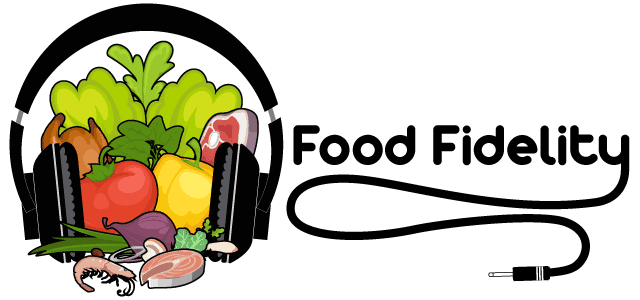What's up y'all, it's your guy coming atcha with some tips and tricks for cookin' up a storm in the kitchen. Today, we're talkin' about lard substitutes, 'cause let's face it, sometimes we wanna cut back on that hella fat content and find some alternatives.
Now, lard has been a staple in Southern cooking for as long as I can remember. It adds that rich, savory flavor to dishes like cornbread, fried chicken, and collard greens. But, we also know that too much of a good thing ain't always good for us.
Another option is to use ghee, vegan butter or margarine instead of lard in recipes like biscuits or pie crusts. They'll still give you that flaky, buttery texture without the use of animal fats.
So there you have it folks, don't be afraid to experiment with different lard substitutes in your cooking. Your taste buds and your body will thank you!
What Is Lard
Ah, lard. If you're from the South like me, then you know already, and the mere mention of this word is enough to conjure images of warm biscuits coming out of the oven, sizzling fried chicken with golden-brown skin and succulent greens straight off the stove. But what exactly is lard?
What makes it different from other cooking fats we have in our pantry? How does it affect the flavor and texture of foods that its used in? These are questions I regularly hear my folks ask as they stumble across recipes requiring a few tablespoons or even cups full! To answer these questions and explore further into one of my favorite cooking ingredients let's dive into all things "lard"!
Lard is straight-up rendered pork fat. It is a semi-solid at room temperature and has been used in cooking and baking for centuries, particularly in traditional Southern cuisine.
Lard is prized for its unique flavor and ability to produce flaky, tender textures in baked goods.
Lard Uses
Lard has been used in cooking and baking for centuries, particularly in traditional Southern cuisine. Here are some common uses for lard:
- Frying: Lard has a high smoke point, which makes it a great option for deep frying. It can be used to fry foods like chicken, fish, and vegetables, producing crispy and flavorful results.
- Baking: Lard is prized for its ability to produce flaky, tender textures in baked goods. It can be used in recipes for pie crusts, biscuits, and pastries, among others.
- Cooking: Lard can also be used as a substitute for butter or oil in cooking. It can add flavor and richness to dishes like soups, stews, and casseroles.
- Seasoning: Lard can be used as a seasoning for dishes like beans and greens. A small amount of lard can add depth and richness to the flavor of the dish.
- Preserving: In the past, lard was often used as a preservative for meat. It can help to seal in moisture and prevent spoilage.
Best Substitutes For Lard
There are several flavorful lard alternatives that can be used in cooking and baking. See the below substitutes for lard:
- Vegetable oil: Vegetable oil is a popular substitute for lard in many recipes. It has a neutral flavor, making it a versatile choice.
- Canola oil: Canola oil is another good substitute for lard. It has a mild flavor and can be used in a variety of dishes.
- Olive oil: Olive oil has a distinct flavor that may not be suitable for all recipes, but it can add a delicious and unique taste to many dishes.
- Vegan butter or margarine: Vegan butter or margarine made from plant-based oils can be used as a substitute for lard in baking. They have a similar texture and can produce flaky and tender results in baked goods.
- Coconut oil: Coconut oil can be used as a substitute for lard in some recipes, but it's important to keep in mind that it has a different flavor profile and texture.
Ultimately, the best lard substitute will depend on the recipe and personal preference. Experimenting with different substitutes can help you find the perfect option for your cooking and baking needs.
What Is Smoke Point?
Smoke point refers to the temperature at which an oil begins to smoke and break down, releasing potentially harmful compounds and creating a burnt taste. Different oils have different smoke points, which can affect their suitability for different cooking methods.
Using an oil with a smoke point that is too low for the cooking method can result in a burnt or bitter taste, while using an oil with a high smoke point can produce delicious and evenly cooked results. It's important to choose an oil with an appropriate smoke point for the cooking method you plan to use to ensure the best flavor and texture in your dishes.
e.
Frequently Asked Questions (FAQs) About Lard Substitutes
- Can lard substitutes be used in any recipe? In most recipes, lard substitutes can be used interchangeably with lard. However, some recipes may require adjustments in the amount of substitute used or the cooking method.
- Will lard substitutes affect the taste of my dishes? Lard substitutes may have a slightly different taste than lard, but they can still be delicious and flavorful. Some people may not notice a difference in taste at all.
- Can I still make Southern dishes without lard? Absolutely! Southern cuisine is known for its rich flavors and delicious dishes, and there are plenty of ways to achieve those flavors without using lard. Experiment with different substitutes and find what works best for you and your taste buds.
- Are lard substitutes more expensive than lard? The cost of lard substitutes can vary depending on the brand and type of substitute. In general, vegetable oils and margarine tend to be less expensive than lard, while high-quality olive oils may be more expensive. However, the cost difference is usually not significant.
